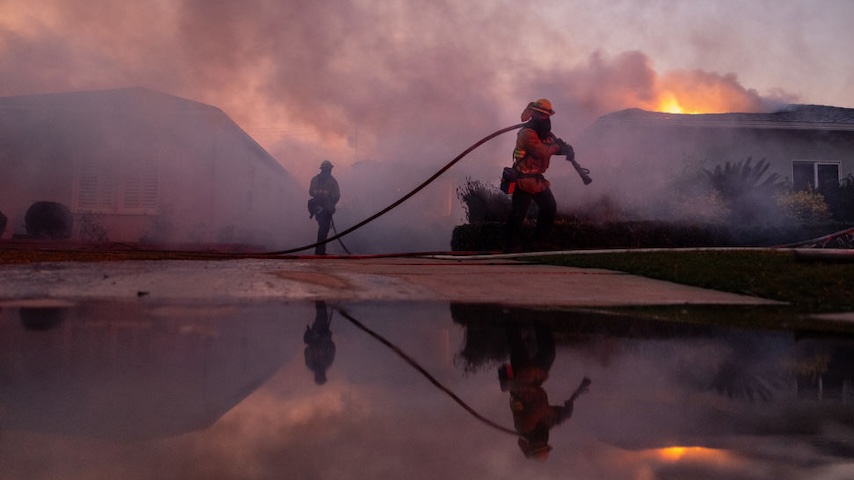L.A. Fire Hydrants Offer Lesson in Climate Change Preparedness
Photo by Jay L. Clendenin/Getty Images
Why even call it a “fire hydrant” if it won’t hydrate a fire? That was the question percolating around the devastating Los Angeles wildfires this week, as reports of desperate firefighters hooking up to hydrants and coming up empty started to spread. Only, the basic assumption — the city was running out of water to fight the fires — was not true. Instead, it was running out of water pressure, and in the process demonstrating how ill prepared cities likely are to deal with the sorts of growing and compounding impacts that a changed climate can unleash.
“There is no lack of water flowing through our pipes and flowing to the Palisades area,” an LADWP spokesperson told LAist. “Water remains available in Palisades, but is limited in areas at elevation impacting fire hydrants.”
The basic story here is that a few large water tanks saw their supply diminish rapidly as the fires spread, and those tanks generally provide the pressure needed to push water in the pipes uphill, toward homes and, yes, fire hydrants. The system is really not set up for the sort of hellscape the combination of dry conditions and extreme winds unleashed this week; in other words, it’s not set up for a climate changed world.
“We had a tremendous demand on our system in the Palisades. We pushed the system to the extreme,” said Janisse Quiñones, the chief executive and chief engineer of L.A. Department of Water and Power. “Four times the normal demand was seen for 15 hours straight, which lowered our water pressure.” She stressed that people across the system needed to conserve water to help keep the hydrants running. “The fire department needs the water to fight the fires, and we’re fighting a wildfire with urban water systems, and that is really challenging.”
This yielded some dark absurdities, like a local resident in Pacific Palisades, who “spent the whole day up on the roof, just watering and watering and watering,” even as his neighbors had already evacuated. His house was spared, while many of theirs were not; and then he stood out front for a New York Times camera and lamented how the fire hydrant directly in front of his home had run dry. “There was no planning,” he said. “How can you have dry fire hydrants, it’s incredulous [sic] to me.”
The situation has reared its head before, most recently and notably in the Maui wildfires in 2023. Firefighters then rely on other water sources, including from helicopter support, which in this week’s case was not possible with 80-mph wind gusts. “A firefight with multiple fire hydrants drawing water from the system for several hours is unsustainable,” LA County Public Works director Mark Pestrella said on Wednesday. “This is a known fact.”
There is, in theory, a version of an urban water system built to handle this — we’re just unlikely to build it. It would have multiple redundancies in terms of water sources, so that the 15-hour demand spike wouldn’t reduce those tanks enough to see the pressure drop. It would be “incredibly expensive,” per one expert. And that’s the rub: adapting to the warmer, more dangerous world we have created gets more and more expensive every day.
There is some misinformation floating around out there, that Los Angeles had recently cut the fire department’s funding by millions, and the apparent correction (it has actually increased over last year, by as much as $50 million, according to one source) is unlikely to pierce that now solidified falsehood. Either way, a few more millions to the fire department would not have stopped this; and as we’re proving over and over, humans are more apt to try and clean up the mess afterward than spend what it takes to reduce the suffering in advance.